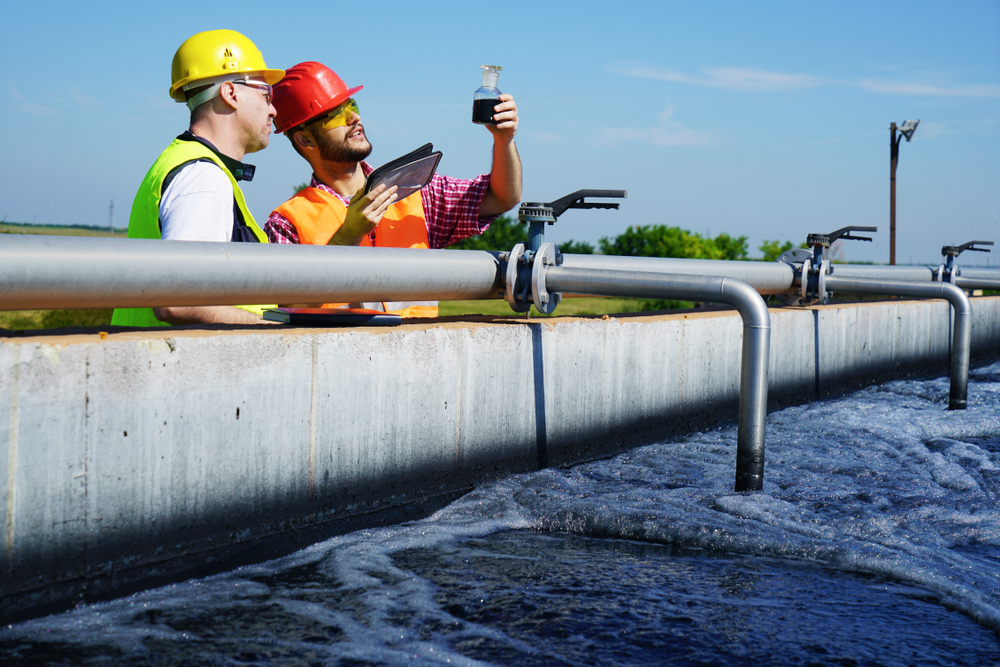It’s important for facilities to maintain quality drinking water and stormwater not only to protect public health, but also to follow local, state, and federal regulations.

Brian Davis, director of enterprise accounts of water quality testing for AQUALIS, gave a presentation titled “Understanding Water Quality Testing for Drinking Water & Stormwater” during Facilities Management Advisor’s FM NOW: Emergency Preparedness virtual summit, sponsored by AQUALIS.
Davis has over 15 years of experience in stormwater facility inspection, maintenance, and testing, including managing stormwater maintenance programs, on a national level. He also has over 10 years of public water system testing and maintenance experience, including installation and repair.
Drinking Water Quality Standards
The responsibility of providing safe drinking water is shared among the Environmental Protection Agency (EPA), states, tribes, water systems, and water system operators, according to the EPA. Public drinking water systems regulated by the EPA and delegated states and tribes provide drinking water to 90% of Americans.
Public water system facilities, which can be publicly or privately owned, serve at least 15 service connections, or an average of at least 25 people for at least 60 days. There are over 148,000 public water systems in the United States.
Moreover, according to Davis, businesses or residents can choose to treat their water using a point-of-entry (POE) system, whereby the water enters the facility, or a point-of-use (POU) system, directly at the source such as a kitchen or water fountain.
He also explained that the Safe Drinking Water Act (SDWA) regulates key drinking water parameters and contaminants.
These include:
- Microbiological parameters: bacteria, viruses, and other microorganisms that can cause waterborne diseases
- Physical parameters: characteristics like color, cloudiness, odor, and taste
- Chemical parameters: heavy metals (lead, arsenic, mercury), disinfection byproducts (like trihalomethanes), pesticides, industrial chemicals, and other organic and inorganic compounds
- Radiological parameters: radon, uranium, and radium
- Secondary contaminants: iron, manganese, and sulfate
Drinking Water Quality Testing Program
To meet SDWA parameters, you must implement a drinking water testing program.
“The program involves regular testing and analysis of water samples from various sources, including municipal water systems, wells, springs, and other sources of drinking water,” Davis noted.
The program also includes:
- Sample collection. Take samples at various points in the distribution system.
- Testing and analysis. Include a laboratory analysis to detect potential contaminants.
- Compliance assessment. Compare results with local, state, and federal drinking water quality regulations.
- Public reporting. Use websites or communicate with local authorities.
- Corrective actions. Implement treatment upgrades, infrastructure repairs, or water management strategies.
- Ongoing monitoring. Repeat testing to maintain compliance.
Stormwater Quality Standards
Stormwater, or rainwater and melted snow that flow over the ground and into storm drains, streams, rivers, and other water bodies, must abide by quality standards to mitigate the negative effects of pollutants like oil and grease, heavy metals, and bacteria.
The EPA reports that the National Pollutant Discharge Elimination System (NPDES) regulates stormwater discharges from municipal separate storm sewer systems (MS4s), construction activities, and industrial activities.
Other entities that can implement stormwater management practices include municipalities, government agencies, and environmental organizations, according to Davis.
“The purpose of stormwater quality standards is to protect water resources, ecosystems, and human health by minimizing the negative impacts of stormwater runoff,” he said.
These standards may include:
- Water quality criteria: Thresholds for pollutants such as suspended solids, nutrients, bacteria, and metals.
- Best management practice (BMP) requirements: Controlling and treating stormwater runoff effectively, such as through rain gardens, permeable pavements, and more.
- Construction site runoff: Manage sediment and erosion during construction activities to prevent excessive sedimentation in stormwater runoff.
- Illicit discharge and elimination: Identify and eliminate unauthorized or nonstormwater discharges into stormwater drainage systems.
- Public outreach and education: Educate the public about stormwater pollution, and encourage community involvement to protect water quality.
- Monitoring and reporting: Mandates in monitoring stormwater discharges, assessing water quality, and reporting the results to authorities.
- Stormwater management plans: Develop plans by municipalities and industrial facilities to manage stormwater runoff and meet the standards.
Stormwater Quality Testing Program
In order to meet those standards, it’s important to monitor and assess the quality of stormwater runoff in specific areas. A successful program will consider:
- Sampling locations. Identify high-risk areas for pollution.
- Sampling frequency. Frequency may vary based on regulations and objectives.
- Water quality parameters. Determine which pollutants will be measured.
- Laboratory analysis. Data will show the level of pollution and trends over time.
- Data analysis and interpretation. Identify potential sources of pollution.
- Reporting and communication. Share results with local authorities, residents, and businesses.
- Stormwater management strategies. Determine ways to reduce pollution.
- Compliance and regulations. Ensure the program meets local, state, and federal laws.
Learn More
During the session, Davis also discussed details of drinking water and stormwater system classification systems, drinking water parameters, public water systems, and older combined stormwater/sewer systems.
To watch the entire webinar on demand for FREE, click here.
